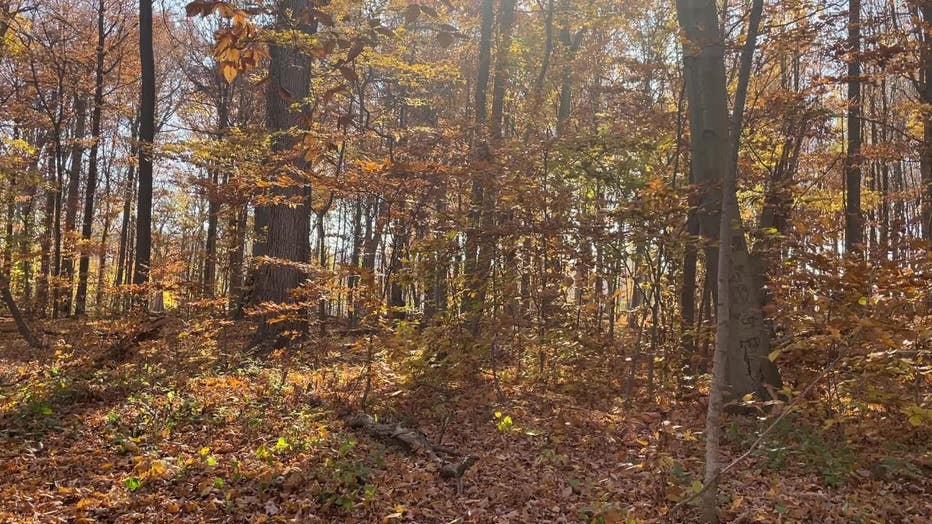Wisconsin fall foliage coming to an end: What makes it special?
What makes Wisconsin fall foliage special?
As peak color comes to an end in southeast Wisconsin, there is a reason why our fall colors are so special in our neck of the woods.
MILWAUKEE - As daylight shortens late summer into fall, trees begin preparing for winter – sending nutrients down into the roots as average temperatures continue to fall.
Thanks to eastern Wisconsin's forest composition, we're treated to some of the nicest fall colors in the country. But why?
For starters, our state tree, the sugar maple, puts on maybe the most brilliant of all colors come fall. Ranging from yellow to orange, it can set a forest ablaze with variations in color. Mixing in oaks, cherries, hickory and even beech, much of us aren't far away from some beautiful color.
SIGN UP TODAY: Get daily headlines, breaking news emails from FOX6 News
"Disruption of chlorophyll, stopping production because the daylight gets shorter as that chlorophyll is stopped being produced, it kind of dissipates and disappears throughout the leaf, and then you start to see what are called the carotenoids that’ll be your yellows, oranges and reds," said Nick Gall, ecological restoration manager for the Mequon Nature Preserve.
There's no great explanation from an evolutionary perspective as to why trees do this. From deterring insects, showing the vitality of the tree and possibly warding off extinct species, we just will never know what the evolutionary advantage is of changing brilliant colors in fall.

Invasive species, like buckthorn and honeysuckle, choke out the understories of forests and can prevent brilliant-colored native species from shining through. This is why some woods near you might still be green into December with invasive species. To see the real color, you need diverse and old forests.
"Your state parks, your county parks, your city parks are always great," Cory Gritzmacher, Mequon Nature Preserve director of operations and restoration, said. "Finding those mature wood lots are always fantastic because that’s where you find those native tree species in those mesic forests."
FREE DOWNLOAD: Get breaking news alerts in the FOX6 News app for iOS or Android.
All the pigmentation that creates the color can vary. Carotenoids, flavonoids, anthocyanins and decomposing chlorophyll at different densities cause all kinds of vibrant displays.
Maple, basswood and oak dominated forests put on the most brilliant shows, but understory species can also pop quite a bit. Musclewood, witch hazel and hazelnut have brilliant yellows and oranges as well. Ash, plum and native shrubs will also add tons of edge color to your yard.
To keep your yard healthy, what can you do once the leaves fall?

Southeast Wisconsin diverse broadleaf forest in fall
"Mulch them. They provide a great nutrient source and nitrogen source for your lawn," said Griztmacher. "Especially if you have a big lawn, you can mulch them up with a mower, really simple and easy to do. That way you don’t have to spend the hours and hours of raking them into the curb."
Numerous species of moths, beetles and other insects use these fallen leaves to complete their life cycle as well. You'll help provide the next generation of bird food for an ever-diversifying ecosystem.
While some cultivars of trees are bred for fall color, they often don't provide the same food sources our wildlife need. They often have shorter life spans, too. Gall recommends considering native trees that create yearlong habitats besides a one-month show of color.

